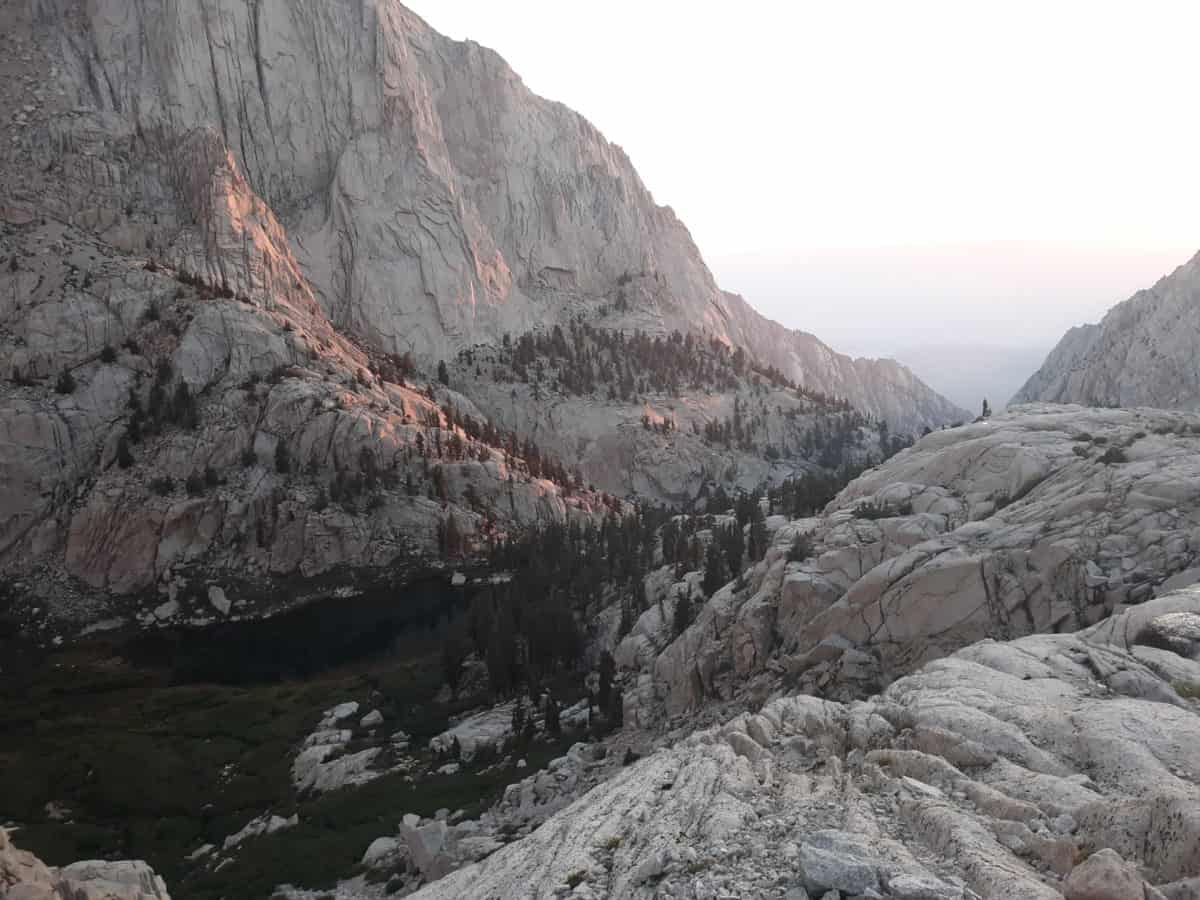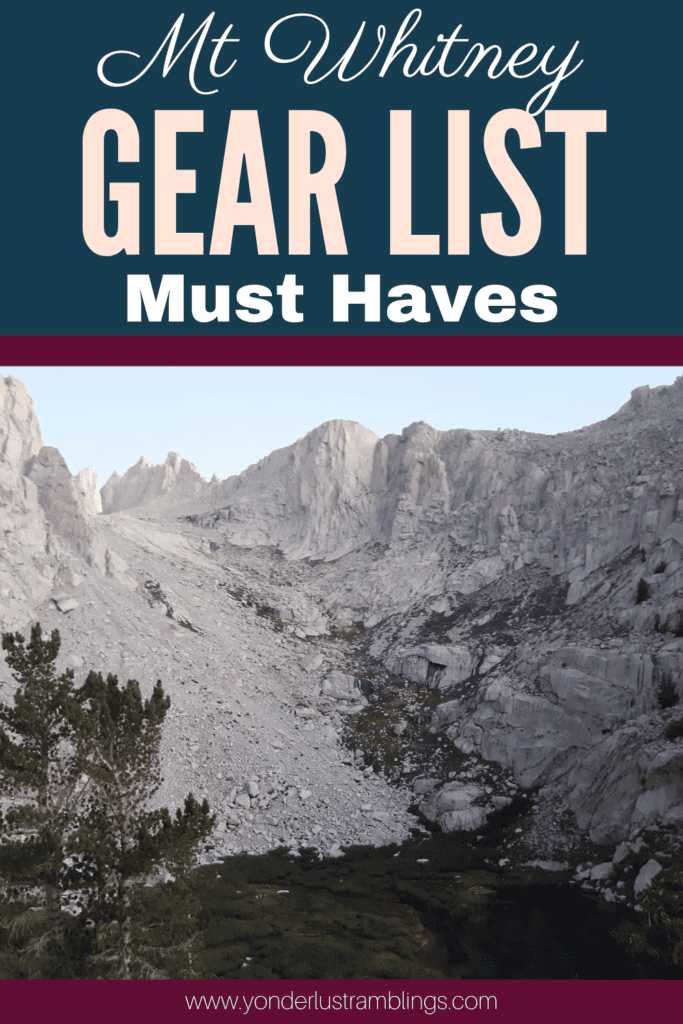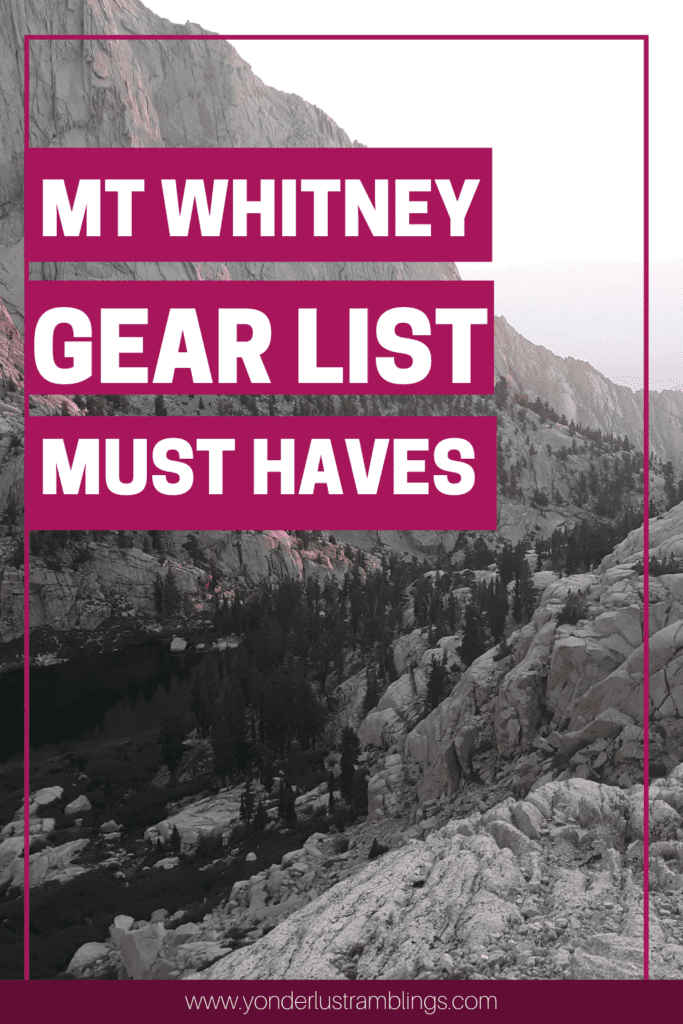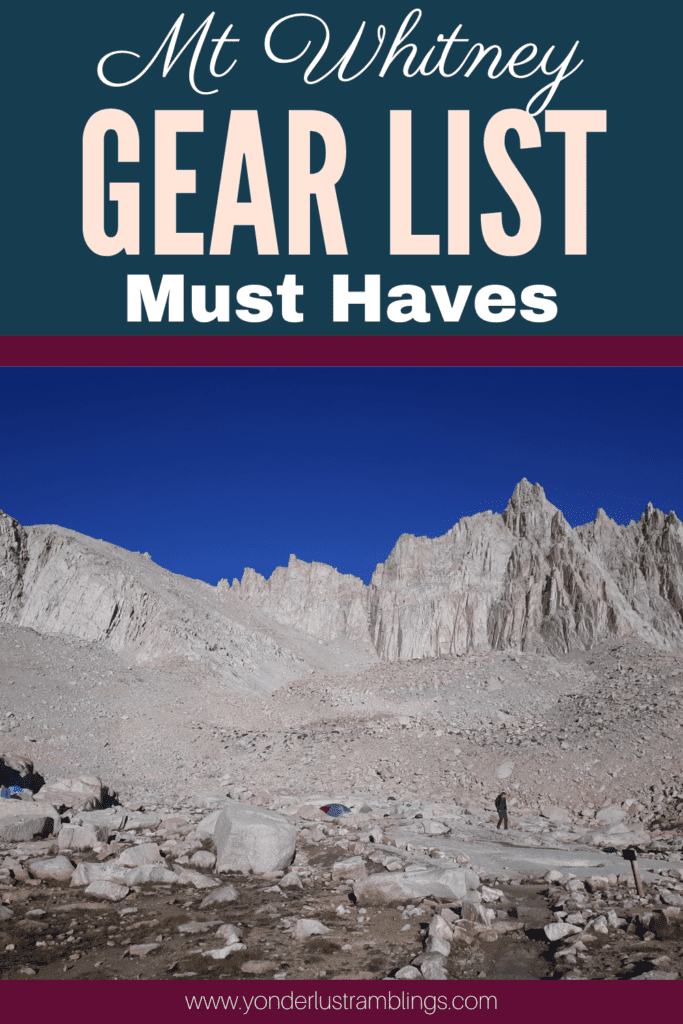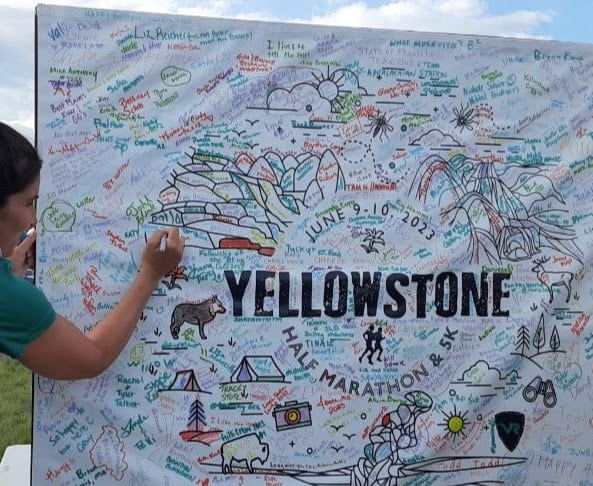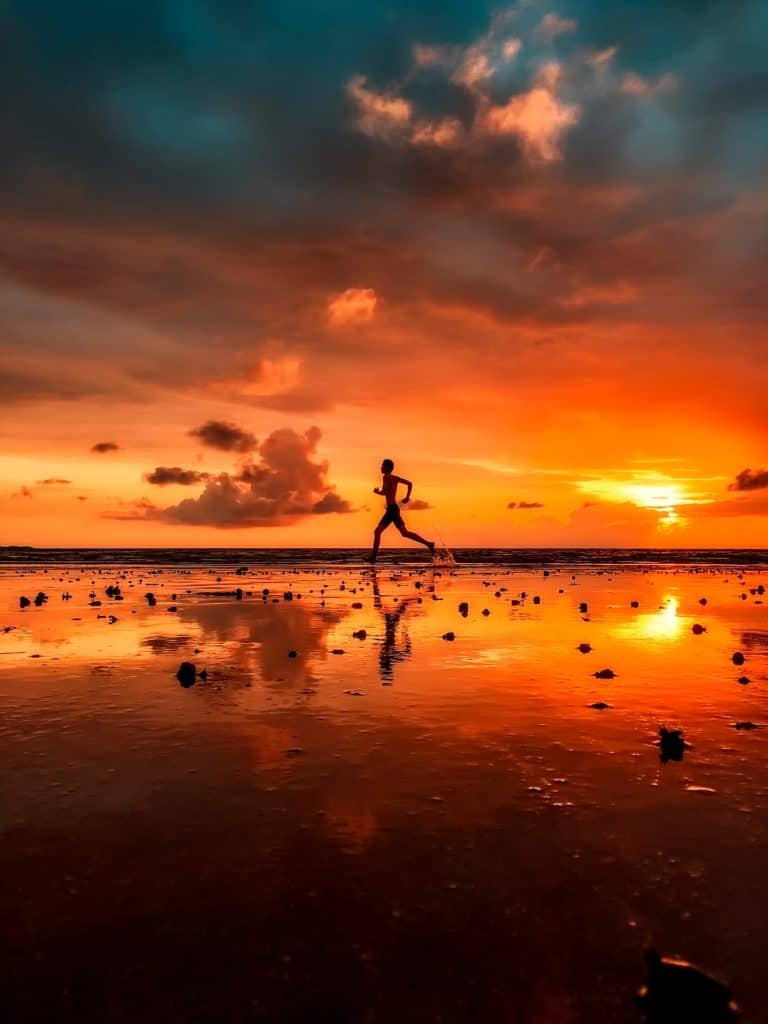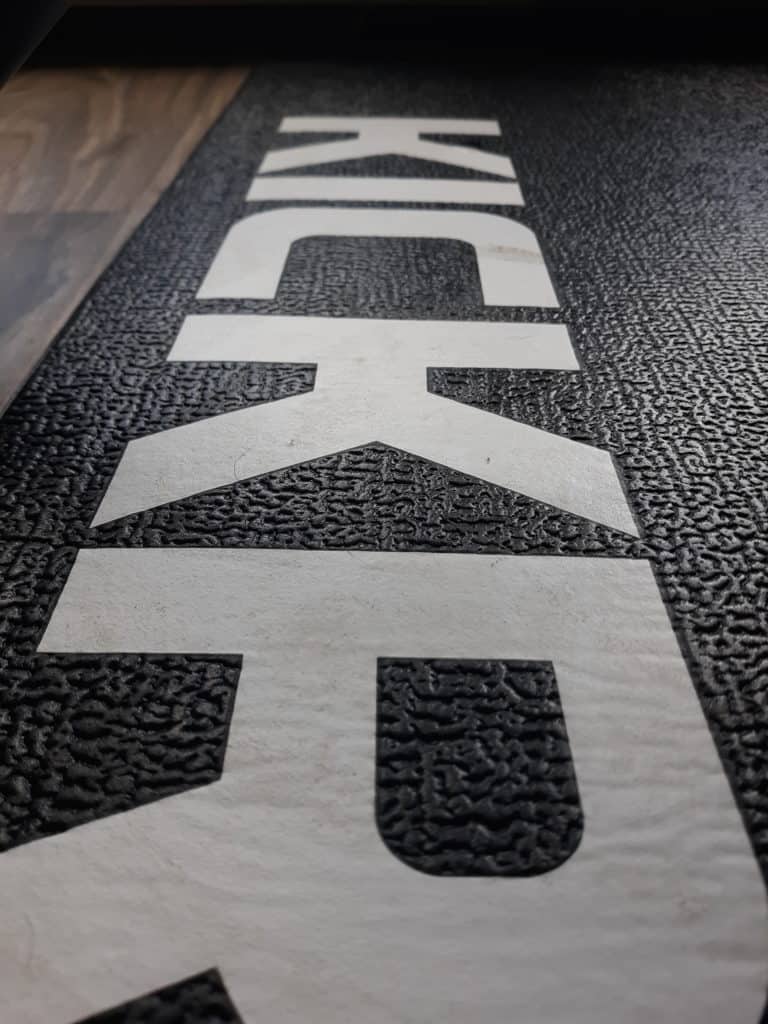Mt Whitney Gear List for a Successful Day Hike
Tackling Mt Whitney, the formidable and iconic highest point in the lower 48 states, can understandably be overwhelming. The idea of hiking 22 miles over 6,000 feet of elevation gain and to a height of over 14,000 feet is challenging enough, but then throw into the mix figuring out what you need to pack! If you are feeling the tug to take on the Mount Whitney hike in one day, but are holding back because you aren’t sure what to include on your Mt Whitney packing list, then worry no more! This post is dedicated to making that Mt Whitney gear list simple and straightforward. Grab these essentials, and you’ll be ready to conquer Mt Whitney responsibly, successfully, enjoyably, and, most importantly, safely!
*Need to Know! This post is all about preparing your gear list for a Mt Whitney day hike! As you may know, it is possible to both day hike OR overnight backpack the Mt Whitney Trail. Which one you ultimately choose will be reflected during your Mt Whitney lottery process.
*If you are overnighting, you will need to add additional overnight backpacking gear to your Mt Whitney packing list that this post will NOT address. This is a DAY HIKING Mt Whitney gear list post 🙂
Disclosure: Below are some affiliate links-these are all products I highly recommend. I won’t make any recommendations on this page that I haven’t tested or personally used! Enjoy this guide to the complete Mt Whitney gear list essentials!
Table of Contents
Mt Whitney Gear List for Day Hiking
While you can hike Mt. Whitney year round, the most popular time is in the summer months, between June and September. Hiking Mt Whitney in this timeframe requires no technical skills, and is the most favorable season to hike. May 1st – November 1st is quota season, which means you HAVE to win a permit in the annual Mt Whitney lottery to hike Mt Whitney between these dates. This post will address developing a Mt Whitney gear list for day hiking between May and November!
Mt Whitney Gear List Quick Links:
- Recommended Trail Runners: Hoka One One Speedgoats
- Recommended Hiking Socks: Hilly Twin Skin Socks
- Hilly Women's Twin Skin Anket, Magenta/Grey Marl, Medium
- Recommended Layering Brand: IceBreaker Merino Wool
- Recommended Outer Shell Jacket: Outdoor Research Helium II Jacket
- ULTRALIGHT RAINCOAT: Weighing a mere 5.5 ounces, this hooded jacket offers supreme protection. Whether you are cycling, running, camping, hiking, fishing, or just in need of incredible weather protection, choose the Helium II Jacket.
- Recommended Head Layers: Buff or Smartwool Beanie
- Recommended Day Pack: Camelbak Helena 20 Liter Pack
- Breathable Air Mesh: For lightweight comfort and air flow.
- Recommended Headlamp: BioLite Headlamp
- The ultrathin 3D molded housing sits flat on your forehead. That means no bounce, no slip. By integrating our electronics into the fabric, we pack all your lighting into an ultra-thin facing that is designed to fit as seamlessly as a contact lens.
- Recommended Trekking Poles: Black Diamond Trekking Poles
- Premium Cork Grip With Updated Soft-Rubber Grip Extension And Solution Strap For Better Handling And Security
- Recommended Water Bladder: Platypus 3 Liter Wide Mouthed Bladder
- Premium taste-free, leak-proof reservoir with fast flow rate offers hydration on the go for hikers, backpackers, travelers and mountain bikers
- Recommended Water Bottle: Lifestraw Bottle with Internal Filter
- Protects Against Bacteria: Filters out 99.999999% of bacteria including E.coli and Salmonella.
- Recommended Emergency Blanket: Emergency Mylar Thermal Blanket
- Emergency Mylar Thermal Blankets - Emergency Blanket,Space Blanket,Thermal Blanket,Mylar Blanket,Survival Blanket.Our durable advanced aluminized Mylar blankets are perfect for civilian bug out bags, go-bags, and home/auto emergency kits.
- Recommended Emergency Bivvy: SOL Emergency Bivvy
- Emergency bivvy measures 84 x 36 inches, and weighs approximately 3.8 ounces
- Recommended Emergency Signaling: Emergency Mirror/Whistle Combo
- DIMENSIONS: Mirror: 4.5" x 2.75" x 0.1" & Weighs 0.6 oz ; Whistle: 2.75" x 0.75" x 0.75" & Weighs 0.3 oz; Float: 2.3" x 1.3" x 0.25" & Weighs 0.1 oz
- Recommended Locating Accessories: Tom Harrison’s Whitney Zone Map, and Garmin’s In Reach Mini
- Small, rugged, lightweight satellite communicator enables 2 way text messaging using the 100% global Iridium network (satellite subscription required)
- Recommended Food: Sandwiches, Apple Sauce Pouches, Trail Mix, Peanut Butter Packets, Beef Jerky, Tuna Packets, GU gels
CHECK OUT: Find out just why peanut butter is the ultimate power food!
>>There’s also a bunch of small personal care items that are easy to forget about or overlook when putting together your Mt Whitney packing list. But together, this handful of items is critical. Don’t forget: sunglasses for the strong sun, sunscreen, Chapstick, tissues or toilet paper, WAG bag (you’ll get one of these when you pick up your permit), blister protection, and a first aid kit including bandages, disinfectant/antibiotic ointment, and pain relievers.
Detailed Mt Whitney Gear List for Day Hiking
Imagine you are going to spend all day out in nature, what would you need to bring along? Now imagine you are planning to spend all day outdoors, but you are entering a realm filled with potentially harsh elements, strong sun and wind, 22 miles worth of foot to earth contact, a consistent uphill grade, and an altitude that can make simple breathing a struggle at times.
If this sounds like an exciting way to spend a day to you, then you are in the right place! And I promise you, hiking Mt Whitney in one day is an exceptionally exhilarating and unforgettable way to spend a day! But you better be prepared for it!
4 STEPS to Prepare for Hiking Mt Whitney in One Day:
- Enter the Annual Mt Whitney Lottery and Win a Permit
- Train for Hiking Mt Whitney in One Day
- Complete you Mt Whitney Gear List
- Get Familiar with the Mt Whitney Trail
There is no easy way out of getting stranded at mile 10, or no quick escape from that mountain if a storm sneaks up on you unprepared! A Mt Whitney day hiker HAS to be prepared, and one of the most important aspects of that preparedness plan is having a well planned out and well executed Mt Whitney packing list.
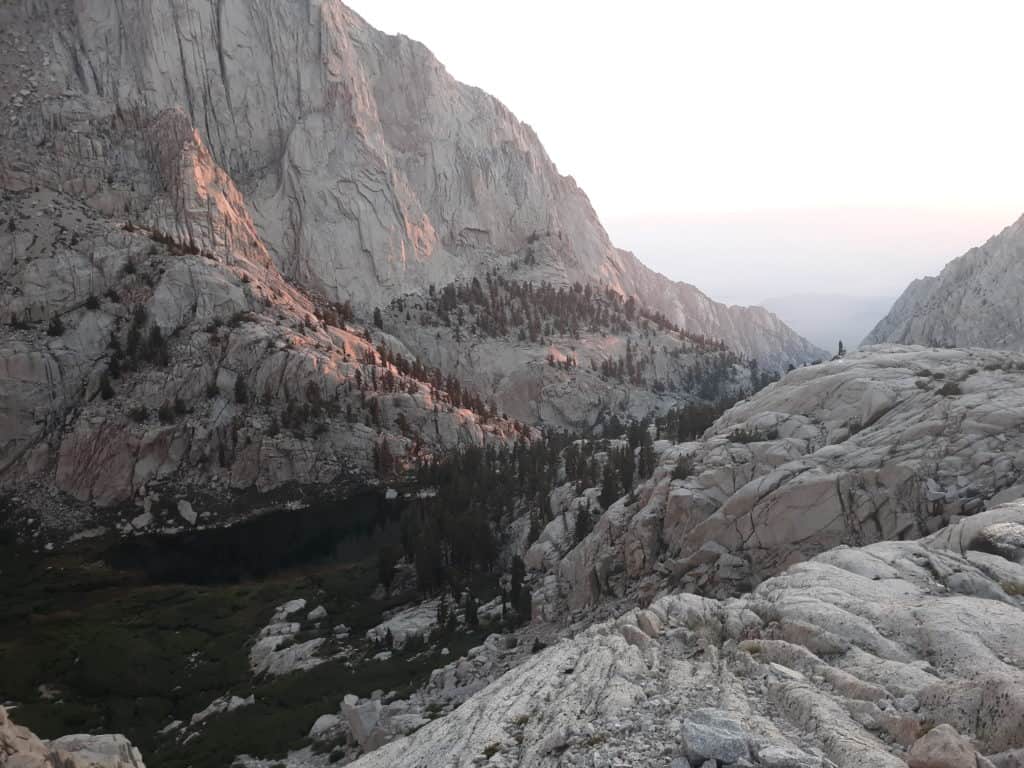
Mt Whitney Packing List Categories
Let’s break down your Mt Whitney gear list into categories to start with.
- Clothing (including Footwear)
- Backpack and Accessories
- Emergency Gear
- Food and Water
Mt Whitney Gear List Category #1: Clothing
The “clothing” category is broad, but everything in it is vitally important. First up is footwear.
SHOES– there are differing opinions on what “kind” of footwear is “best” for Mt Whitney. My answer to that is another question: what kind of footwear have you been successful in in previous long distance, all day long hikes, similar to Mt Whitney? Because you should have at least a handful of those under your belt before taking on Mt Whitney!
Mt Whitney has a consistent uphill grade that averages at about 550 feet per mile of elevation gain, and it is not a technical trail. There are no boulders to scramble and no expansive scree fields. (If you are into boulder scrambling and scree fields, check out another state high point hike over in nearby Nevada at Boundary Peak!)
By hardcore mountain terms, the elevation grade and the terrain itself are more manageable than many other alpine mountains. Where Mt Whitney remains imposing is the fact that it is still a high altitude mountain, with an extremely impressive mileage of 22 miles roundtrip, and a whopping elevation gain of over 6,000 feet.
That is extremely difficult to do, even with a trail that is not technical. With that said, do you need traditional hiking boots? No. This is a trail I would say is a prime candidate for trail runners.
I personally use trail runners on all my long day hikes similar to Mt Whitney, like the 24 mile long Rim to Rim hike I have completed in Arizona’s Grand Canyon.
Why do I prefer trail runners? Trail runners are inherently lighter than many traditional hiking boots, and when I’m faced with 20+ miles of trail, I greatly appreciate the way that trail runners keep my feet feeling lighter, quicker, more refreshed, and with increased longevity versus hiking boots.
Simply put, trail runners make me feel like I am able to move faster, lighter, and for longer. I put my whole trust in the best trail runners out there – Hoka Speedgoats! These trail runners have unmatched cushioning, reliable and trustworthy grip, and help me go further for longer!
SOCKS – it does no good to pick out a superb pair of hiking footwear, and then pair it with a sub par pair of socks. Nothing can derail a long day hike like this one quicker than blisters. I used to be very blister prone, until I discovered Hilly Twin Skin socks! Apparently my feet just needed a little help with friction. These amazing socks are lined, which reduces the friction of fast paced hiking and running.
LAYERS – there’s a plethora of clothing options to choose from when hiking Mt Whitney. Which brands you include in your Mt Whitney packing list is less important than which LAYERS you include, and WHAT those layers are made out of. Mt Whitney is an interesting blend of hot, dry desert, with cold mornings, cold winds, and the high altitude weather that comes with a peak over 14,000 feet tall. That means layers, and the right kinds. For your base layers, you are going to want to go with moisture wicking, quick drying, and breathable. NO COTTON! My go to brand for active base layers is IceBreaker. That’s because I love their merino wool base layers that achieve all of the above qualities. In the peak climbing season for Mt Whitney (late spring – early fall), your legs will probably be ok with a base layer. You will want a possible mid layer, and definitely an outer shell layer, for your top half. For mid layers, follow the same rules as base layers, but go with a layer a bit more substantial. For your outer layer, you NEED to invest in a fully waterproof and windproof shell layer. I have found that it is quite difficult to achieve the perfect blend of fully waterproof and windproof, while being lightweight and compactable. It seems to usually be one or the other. I believe the best match out there is Outdoor Research’s Helium II jacket. It literally weighs only several ounces, compresses down to a handful, is easy to pack and carry, and best yet, is fully waterproof and windproof. This outer shell will not provide you much warmth, but that is what your base and mid layers are for. This outer shell layer WILL protect you from brutal winds and surprise storms that may sneak up on you atop Mt Whitney.
GLOVES– I like to think of myself as having a high cold tolerance, and rarely do I break out gloves on a hike, even on other chilly 14’er summits, like the highest point in Colorado at Mount Elbert! But I did in fact use gloves while hiking Mt Whitney, as it was quite chilly in the morning when I started, and did not warm up much as I climbed. Something with waterproof capabilities and at least some minimal warmth should suffice when hiking Mt Whitney during peak season.
HEAD LAYER – there are a couple good options out there for head layering, but it is a good idea to invest in something. The wind and cold can be brutal at times. I absolutely love my Buff accessory, and wear it on just about every day hike I complete. If you see a picture of me on a mountain summit, most likely I will be wearing my Buff! Buffs are so multi-purpose and functional, and can be used in a variety of ways and for a variety of purposes. I like to roll mine and use them as headbands/ear protection. They provide warmth, keep my hair out of my face, and do a superb job protecting my ears and keeping the wind and cold out. If Buffs are not your thing, SmartWool makes a great wool cuffed beanie that achieves the same. Sometimes I even use both together for the ultimate high altitude layering!
Mt Whitney Gear List Category # 2: Backpack and Accessories
DAYPACK – again, this post is solely geared to day hiking Mt Whitney. That being said, you should be able to pack everything you need in a day pack around 20 liters. My favorite day hiking day pack is Camelbak’s 20 liter Helena day pack. It has the perfect amount of storage for all my necessities, is water bladder compatible, has excellent shoulder cushioning and hip support, and can store trekking poles when not in use.
HEAD LAMP – if you are day hiking Mt Whitney, you should be starting very early in the morning to ensure that you finish by nightfall. The average hiker needs between 12 – 18 hours to complete a day hike of Mt Whitney. You should have enough practice hikes of similar distance and intensity under your belt to be able to anticipate your average hiking pace and your estimated time of completion. However, either way, since you should be starting your hike before dawn, you will need a head lamp to do so safely. As a hiker with long distance running in my background, I personally love the BioLite headlamp, because it is small, not bulky, lightweight, and is made with runners in mind. Its main claim to fame is the zero bounce when in movement. I’ve used it multiple times now, including on a 12 AM alpine climb up Mount Hood, and it performs beautifully and lasts 5 + hours on one charge.
TREKKING POLES – the majority of day hikers on Mt Whitney will find trekking poles extremely helpful and beneficial. I do store mine for portions of Mt Whitney, but they do help with some of the more aggressive sections of uphill and downhill. If you opt to bring trekking poles, make sure that you have a daypack that is compatible for storing them when not in use. My own trusted brand of trekking poles are Black Diamond. I love my own pair because they have never faltered when I needed them the most, and the cork handles are great at preventing sweaty palms from slipping!
WATER TRANSPORTATION SYSTEM – your water transportation system could comprise multiple parts, but it is vitally important that you think through how you want to transport your water, and plan accordingly! There are several popular methods for water transportation on Mt Whitney: water bladders, water bottles, and filters.
The good news is there are a surprising amount of water sources on the Mt Whitney Trail. You can find reliable water sources up until Trail Camp. So you have a couple different options. If you aren’t familiar with Trail Camp, get to know all the logistics of the Mt Whitney Trail here!
Some people like to pack in the amount of water they anticipate they will need for the day. Meaning, they just start out with 3 or 4 liters on them at the time of starting their hike. Other hikers want to “pack” lighter, and one way to do this is to bring less water on you, and fill up from the water sources as you go. Either way is doable, just make sure that you bring along the right gear.
If you want to go the route of starting off with what you need, I would recommend a reliable on the go source of hydration like Platypus’s 3 liter water hydration bladder. I like this method because this hydration bladder is wide mouthed, making it easy to fill, empty, dry, and clean. Nalgene water bottles are also a reliable source of getting a couple liters of water up the mountain with you.
If you plan to start off with less and fill up along the way, make sure you have a filtering method in place, and one that you have used, are familiar with, and know how to execute. Do not make Mt Whitney the first place you try out your filtering method. I personally use LifeStraw water bottles with the internal filter, because it gives me the best of both worlds when it comes to speed and efficiency while filtering water. You just fill the water bottle up straight from the source, and the internal filter does its job from there as you go.
So what water transportation method do I personally use for Mt Whitney? I start my hike off with 3 liters of water in my Platypus water hydration bladder, and then bring along my Lifestraw water bottle as backup!
PERSONAL CARE ITEMS – There’s also a bunch of small personal care items that are easy to forget about or overlook when putting together your Mt Whitney packing list. But together, this handful of items is critical. Don’t forget: sunglasses for the strong sun, sunscreen, Chapstick, tissues or toilet paper, WAG bag (you’ll get one of these when you pick up your permit), blister protection, and a first aid kit including bandages, disinfectant/antibiotic ointment, and pain relievers.
Mt Whitney Gear List Category #3: Emergency Gear
EMERGENCY BLANKET – emergency blankets are an easily justifiable piece of your Mt Whitney gear list! This small, compact, lightweight, and easily packable item can really help protect you in a bind.
EMERGENCY TENT / BIVY – take it one step further in making sure you protect yourself in a worst case situation. I have been in those situations before, like when I got lost overnight in Utah’s Uintas Mountains, and unfortunately I did not take the extra step to invest in an easy solution like a personal emergency tent or bivy. It would have made my experience a lot less miserable if I had, so now I always hike with one. Emergency tents or bivys are, again, a cheap, easy to pack, and lightweight item of emergency gear that will really help you in a bind. I personally hike with an SOL emergency bivvy.
EMERGENCY SIGNALING – if you ever find yourself in the unfortunate position of being immobile or not vocal, it is important to have a way of signaling. I always hike with a small signaling mirror / emergency whistle combo. Both cheap and easy items to include in your day pack, and they can be enormously beneficial in a worst case scenario.
MAP / APP / EMERGENCY BEACON – Tom Harrison Maps makes a fantastically detailed and helpful hard copy map of the Mt Whitney Zone, that I study ahead of time and carry with me during my hike. You can also use an app like AllTrails with downloadable maps to follow when hiking Mt Whitney. Just make sure you have downloaded your offline map prior to starting the hike. If you want to take it one step further and invest in a heavy duty form of personal emergency beacon, Garmin In Reach’s are a great option!
Mt Whitney Gear List Category #4: Food and Water
I already discussed the importance of water and the necessity of having a water transportation method in place as part of your Mt Whitney packing list. Next, make sure you address the importance of food.
It is important to bring along snacks and food items for fuel on your Mt Whitney day hike. The best hiking foods should be easily digestible, high energy, and easy to pack. Some of my favorites are jerky, RX bars, apple sauce pouches, tuna packets, peanut butter packets, and mixed nuts or trail mix. GU gel packets are also something I utilized on Mt Whitney for a little extra boost.
On Mt Whitney, it is important to consider whether you may need something a little more substantial for a feat of this magnitude. I personally bring along simple sandwiches to eat on my longest break. You need to know whether you need this prior to stepping foot on the Mt Whitney Trail. This goes back to knowing what works for you ahead of time. If you are able to hike 20 + miles on snacks, then that’s fine, but if you need a rest break and an actual simple meal that is more substantial to maintain stamina and output at that magnitude, then know that ahead of time from experience.
Also, do not eat anything new the morning of your hike. Make sure that you eat what you know has worked for you in the past. The morning of is no time to experiment with new fuel options, even if the hiker next to you swears by some new food fad!
DON’T FORGET YOUR PERMIT – And finally, don’t forget your Mt Whitney hiking permit! This is the actual hard copy slip you should receive when you go pick up your permit in person before your hike. This should be affixed to your daypack at all times during your hike!
And there you have it – a complete Mt Whitney packing list!
Hiking Mt Whitney is one of the most challenging and rewarding hiking experiences you can undertake! You can be successful if you plan ahead, and plan responsibly!
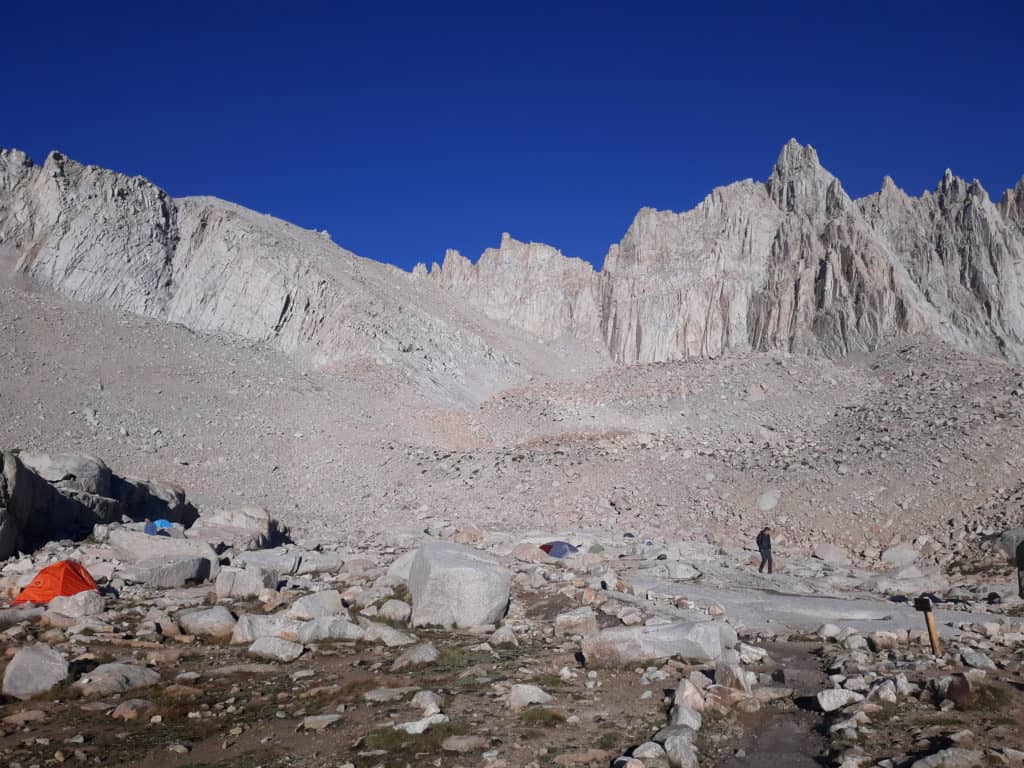
***If you found this information helpful then grab your own downloadable Mt Whitney Gear Checklist HERE!
**Your Mt Whitney packing list is only ONE STEP to hiking Mt Whitney! Don’t forget to check out these other resources:
- How to score a Mt Whitney hiking permit!
- How to Train for Hiking Mt Whitney in One Day
- Get to Know the Mt Whitney Trail
PIN for LATER!
Last update on 2023-08-09 / Affiliate links / Images from Amazon Product Advertising API

